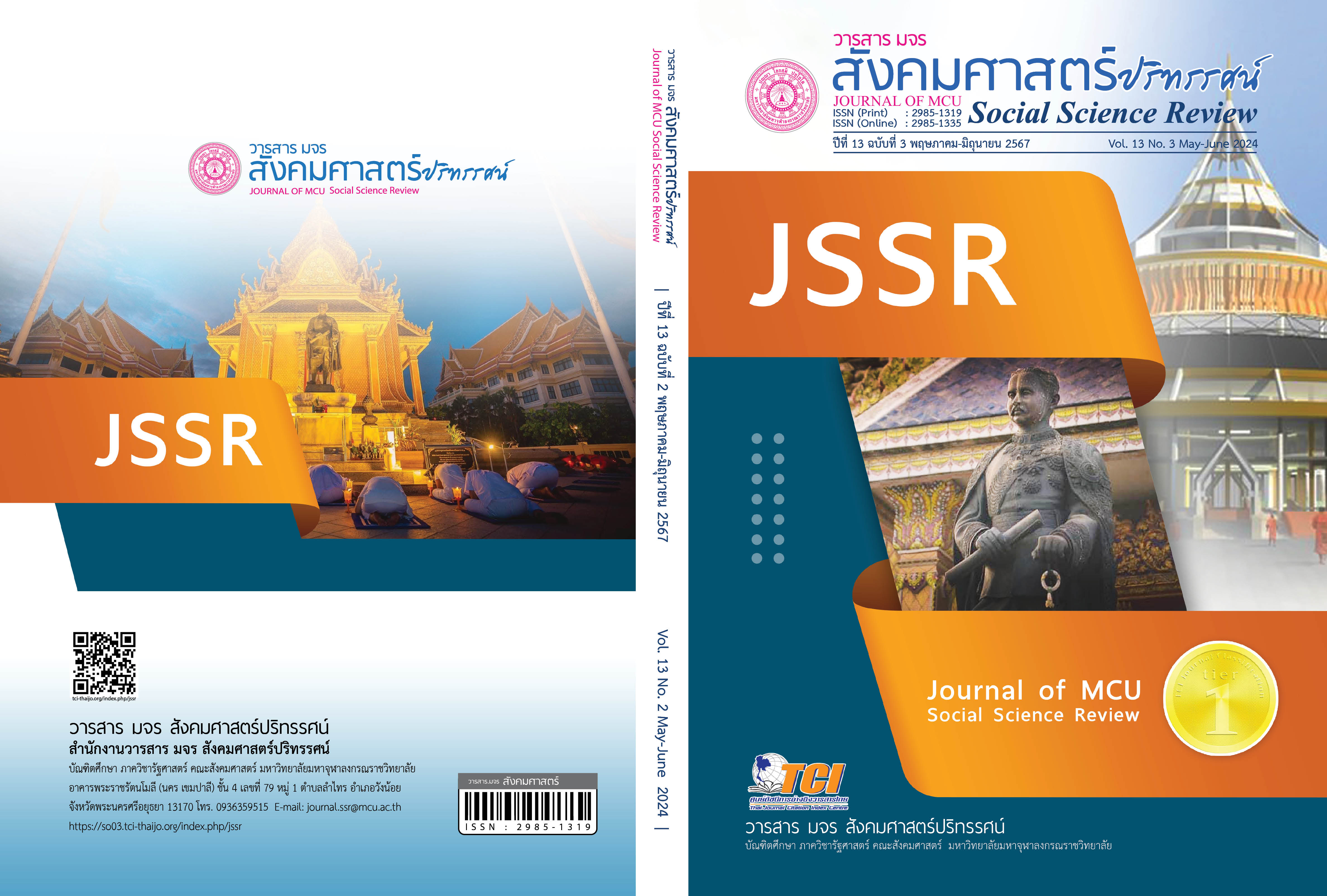ภาวะผู้นำเชิงบริกร: รูปแบบที่เหมาะสมเพื่อการพัฒนาคน องค์การ และสังคม
คำสำคัญ:
ภาวะผู้นำเชิงบริกร, รูปแบบที่เหมาะสม, การพัฒนาบทคัดย่อ
บทความวิชาการนี้ ศึกษาแนวคิดภาวะผู้นำเชิงบริกร (Servant Leadership) จุดเริ่มต้นของแนวคิดที่น่าสนใจซึ่งท้าทายต่อแนวคิดภาวะผู้นำในแบบเดิม จากนั้นได้อธิบายคุณลักษณะของภาวะผู้นำเชิงบริกร รวมถึงผลการศึกษาของนักวิชาการที่พยายามระบุคุณลักษณะที่สำคัญเพื่อพัฒนาภาวะผู้นำให้มีประสิทธิภาพ บนฐานของผลการศึกษาของนักวิชาการดังกล่าวนั้น ได้นำเสนอรูปแบบภาวะผู้นำเชิงบริกรที่เหมาะสมเพื่อพัฒนาคน องค์การ และสังคม ในท้ายที่สุดบทความนี้ได้ชี้ให้เห็นถึงข้อถกเถียงเกี่ยวกับ จุดแข็ง จุดอ่อน และความท้าทายของแนวคิดภาวะผู้นำเชิงบริกร พร้อมทั้งเปรียบเทียบกับแนวคิดภาวะผู้นำแบบอื่น ๆ ซึ่งผลการศึกษาได้ชี้ให้เห็นว่า องค์การที่เน้นพัฒนาคน และการกระจายอำนาจเป็นเงื่อนไขที่เอื้ออำนวยให้ภาวะผู้นำเชิงบริกรเกิดขึ้นได้ดี และมีประสิทธิภาพ
เอกสารอ้างอิง
Daft, R. L. (2008). The Leadership Experience: Mason. OH: Cengage Learning.
Dierendonck, V. D. (2011). Servant Leadership: A Review and Synthesis. Journal of Management, 37(4), 1228-1261.
Dierendonck, V. D. & Nuijten, I. (2011). The servant leadership survey: Development and validation of a multidimensional measure. Journal of bussiness and psychology, 26(3), 249-267.
Eva, N. et al. (2019). Servant leadership: A systematic review and call for future research. The leadership quarterly, 30(1), 111-132.
Gergen, D. (2006). Bad news for bullies. U.S. News and World Report.
Gill, R. (2002). Change management--or change leadership?. Journal of Change Management, 3(4), 307-318.
Greenleaf, R. K. (1970). The servant as leader. Westfield, IN: Greenleaf Center for Servant Leadership.
Liden, R. C. et al. (2014). Servant leadership: antecedents, processes, and outcomes. The Oxford handbook of leadership and organizations. Retrieved March 20, 2020, from https://shorturl.asia/YUI5t
Liden, R. et al. (2008). Servant leadership: Development of a multidimensional measure and multi-level assessment. The leadership quarterly, 19(2), 161-177.
Northouse, P. G. (2015). Leadership: Theory and Practice (7nd ed.). London: Sage.
Robbins, S. & Judge, T. (2012). Organizational behavior (15th ed.). Upper Saddle River, New Jersey: Pearson.
Sendjaya, S. et al. (2008). Defining and measuring servant leadership behaviour in organizations. Journal of Management studies, 45(2), 402-424.
Spears, L. C. & Lawrence, M. (2002). Focus on leadership: Servant-leadership for the twenty-first century. Sussex: John Wiley & Sons.
Yukl, G. A. (2013). Leadership in Organizations (8th ed.). Englewood Cliffs, NJ: Prentice-Hall.
ดาวน์โหลด
เผยแพร่แล้ว
รูปแบบการอ้างอิง
ฉบับ
ประเภทบทความ
สัญญาอนุญาต
ลิขสิทธิ์ (c) 2024 วารสาร มจร สังคมศาสตร์ปริทรรศน์

อนุญาตภายใต้เงื่อนไข Creative Commons Attribution-NonCommercial-NoDerivatives 4.0 International License.
เพื่อให้เป็นไปตามกฎหมายลิขสิทธิ์ ผู้นิพนธ์ทุกท่านต้องลงลายมือชื่อในแบบฟอร์มใบมอบลิขสิทธิ์บทความให้แก่วารสารฯ พร้อมกับบทความต้นฉบับที่ได้แก้ไขครั้งสุดท้าย นอกจากนี้ ผู้นิพนธ์ทุกท่านต้องยืนยันว่าบทความต้นฉบับที่ส่งมาตีพิมพ์นั้น ได้ส่งมาตีพิมพ์เฉพาะในวารสาร มจร สังคมศาสตร์ปริทรรศน์ เพียงแห่งเดียวเท่านั้น หากมีการใช้ภาพหรือตารางหรือเนื้อหาอื่นๆ ของผู้นิพนธ์อื่นที่ปรากฏในสิ่งตีพิมพ์อื่นมาแล้ว ผู้นิพนธ์ต้องขออนุญาตเจ้าของลิขสิทธิ์ก่อน พร้อมทั้งแสดงหนังสือที่ได้รับการยินยอมต่อบรรณาธิการ ก่อนที่บทความจะได้รับการตีพิมพ์ หากไม่เป็นไปตามข้อกำหนดเบื้องต้น ทางวารสารจะถอดบทความของท่านออกโดยไม่มีข้อยกเว้นใดๆ ทั้งสิ้น





